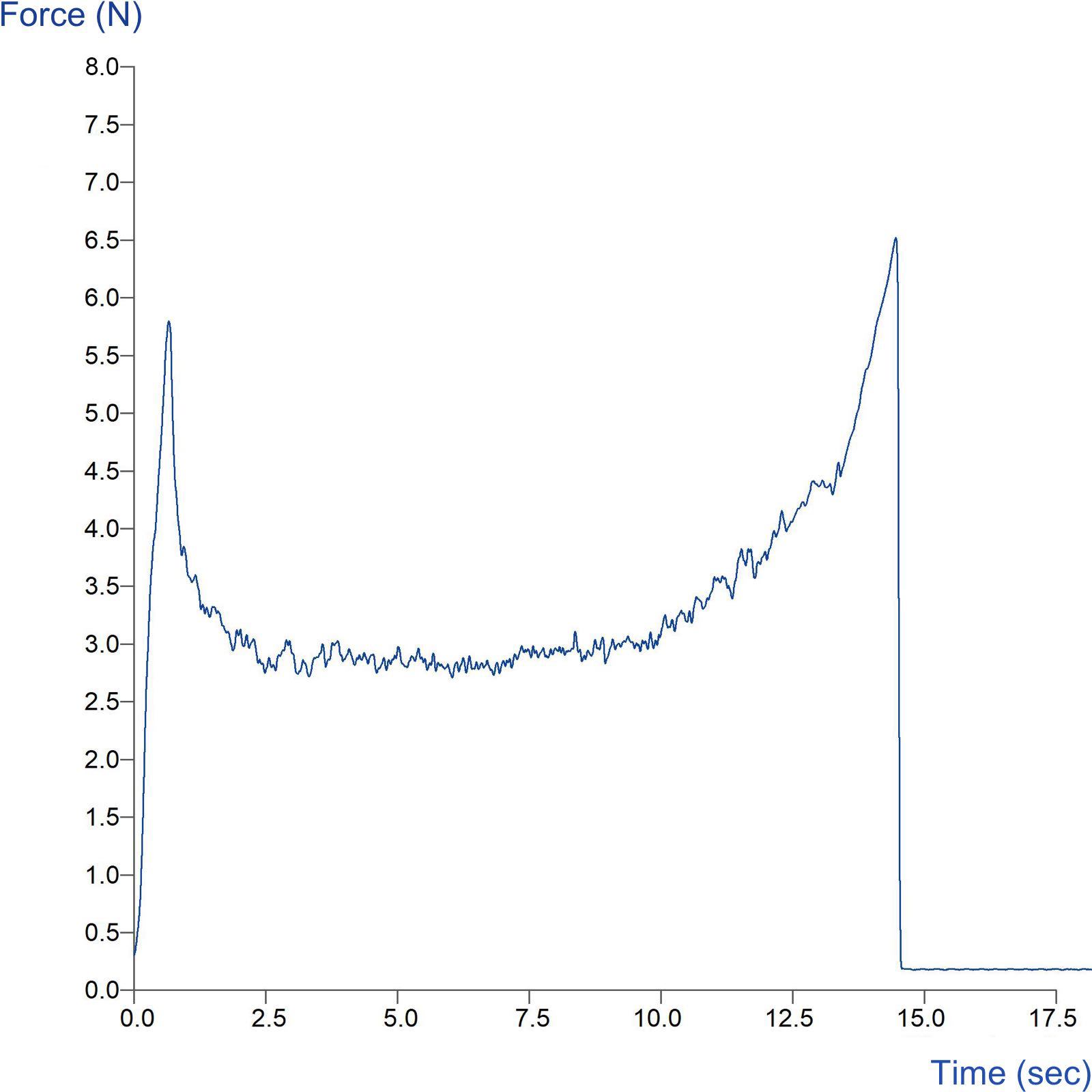Product overview
A wide variety of containers are sealed with a peel-off lid, which must withstand handling, shipping and storage without fail. These products include beverage, foods, pharmaceuticals, medical devices and electronic components. The performance of these seals is always quality critical, frequently important for user-friendliness and in the majority of cases it is crucial for safety. When designing containers a balance must be found between achieving a strong effective seal that prevents product contamination but at the same time is easy to peel back.
This Universal Peel Rig design consists of a multi-position platform which is adjustable to allow the container to be held at 0, 45 and 90 degree angles to evaluate the quality and strength of container seals and adhesive bonds. The platform is positioned on the base of the Texture Analyser and screwed securely into position to suit the container. An adjustable rubber strap has been incorporated to accommodate different sized containers and multiple shapes. When attached to the peel tab of the container, a low profile peel clip and post maximise the peel length for use on a standard height Texture Analyser.
This attachment offers a flexible solution to peel testing. Using this, manufacturers can more precisely simulate the action of consumers, or users, to assess accurately both ease of use and the stability of packaging seals.
How does the Universal Peel Rig work?
Ideal sample form
A rigid vessel that can be held securely in order to be mounted at a chosen angle and a removable component that can be gripped by an upper attachment in order for the component to be peeled from the main body of the vessel.
Technical information
Installation
Full installation instructions are provided within the Education Zone of the latest Exponent/Connect software version and on the technical information sheet accompanying this product.
Chemical compatibility
Stable Micro Systems probes and attachments are commonly made from four materials: anodised aluminium (AA6082 T6), stainless steel (316 T), Delrin (acetyl copolymer) and Perspex (polycarbonate).
In general use, probes and attachments made from these materials will be suitable for testing food products and inert non-food materials.
The four materials listed above are not universally resistant to all types of chemicals and as such the compatibility of the probe/attachment material with the product (to be tested) must be established to prevent damage to the probes and attachments. If the compatibility of the product with the probe is unknown to the customer then the chemical information about the product (Material Safety Data Sheet or Product Data Sheet) should be submitted to Stable Micro Systems. Stable Micro Systems will then assess the suitability of the probe/attachment material for use with the product and advise accordingly. If this advice is not sought then Stable Micro Systems will not accept liability for probes/attachments damaged by chemical attack from the product being tested.
Cleaning and maintenance
All probes and attachments may be cleaned in warm (or hand hot) water using a mild detergent. A soft brush may be used but abrasive cleaning aids should be avoided. Stable Micro Systems products should not be microwaved or cleaned in a dishwasher.
Screw threads should be lightly lubricated after drying using a light lubricant, e.g. petroleum jelly, mineral oil. This will aid the fitting and unscrewing of the item. Each component of a probe or attachment should be wrapped separately when stored, to avoid scratching or chipping. This will safeguard against any unnecessary damage to the accessory.



